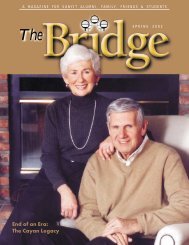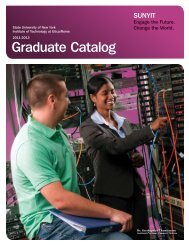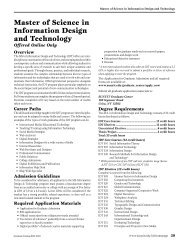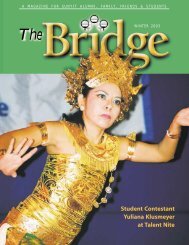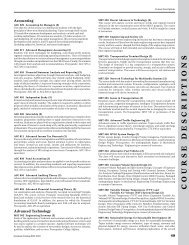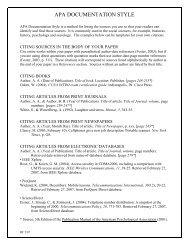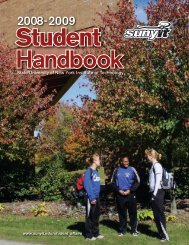Expanding the Public Sphere through Computer ... - ResearchGate
Expanding the Public Sphere through Computer ... - ResearchGate
Expanding the Public Sphere through Computer ... - ResearchGate
Create successful ePaper yourself
Turn your PDF publications into a flip-book with our unique Google optimized e-Paper software.
CHAPTER 7. THE EXPANDING PUBLIC SPHERE 104<br />
<strong>the</strong> group to be active: as illustrated in Table 6.1 on page 77, nearly 46,000 messages<br />
were posted to <strong>the</strong> group by almost three thousand different authors in close<br />
to 8,500 different threads. Assuming a 7-day expiration period, a reader of <strong>the</strong><br />
newsgroup would have found about 800 messages by 150 authors in 225 different<br />
threads on an “average” day. The patterns of author contributions, threads, and<br />
messages per day were examined for evidence of equality, diversity, reciprocity<br />
and quality. As discussed in Chapter 6, <strong>the</strong> talk.abortion newsgroup was found to<br />
be diverse and reciprocal, but lacking in equality and quality. Thus, on two of <strong>the</strong><br />
four dimensions, <strong>the</strong> newsgroup closely resembles what is demanded by <strong>the</strong> idealized<br />
vision of <strong>the</strong> public sphere. Those who seek to have a public sphere which<br />
highlights diversity and reciprocity over quality and equality may find <strong>the</strong>se results<br />
encouraging. Of course, those who value equality and quality more highly may<br />
see <strong>the</strong>se findings as discouraging. It is important to note both <strong>the</strong> tentativeness of<br />
<strong>the</strong>se conclusions, and <strong>the</strong> necessity for fur<strong>the</strong>r research.<br />
In <strong>the</strong> informal zone of <strong>the</strong> public sphere, equality is achieved with equal access to<br />
speaking opportunities and equal distribution of voice among <strong>the</strong> speakers. Equality<br />
is an important feature of <strong>the</strong> informal public sphere because it signals participants<br />
that <strong>the</strong>ir voice matters, and that <strong>the</strong>ir voice matters in some equal proportion<br />
to o<strong>the</strong>r’s voices. This is a plebiscitary notion, supportive of <strong>the</strong> one person, one<br />
vote model familiar in democratic <strong>the</strong>ory (Wolin 1960). There is, to be sure, a<br />
balancing involved with equality. One could certainly argue that equality in voice<br />
is unnecessarily restrictive of intensity – that perhaps it is desirable for those with<br />
<strong>the</strong> most intense feelings to speak <strong>the</strong> most frequently. At <strong>the</strong> same time, though,<br />
it is clear from <strong>the</strong> distribution of participation in <strong>the</strong> talk.abortion newsgroup that<br />
participation is not even remotely equally distributed. Remember: one half of one<br />
percent of <strong>the</strong> authors account for more than 40 percent of <strong>the</strong> articles posted to<br />
<strong>the</strong> newsgroup during <strong>the</strong> study period; five percent of <strong>the</strong> authors account for<br />
nearly 80 percent of <strong>the</strong> articles posted. Even if one wanted to argue for intensity<br />
over equality, this level of concentration cannot be called consistent with <strong>the</strong> idealized<br />
vision of <strong>the</strong> public sphere. A more equal representation of speakers in <strong>the</strong><br />
newsgroup would have brought <strong>the</strong> newsgroup closer to this vision by ensuring a<br />
broader representation of <strong>the</strong> views of <strong>the</strong> participants.<br />
On <strong>the</strong> dimension of quality, <strong>the</strong> talk.abortion newsgroup was also found to fall<br />
well short of <strong>the</strong> mark demanded by <strong>the</strong> idealized vision of <strong>the</strong> informal public<br />
sphere. Quality was measured by <strong>the</strong> tendency of participants in <strong>the</strong> newsgroup<br />
to stay “on-topic;” that is, by <strong>the</strong>ir tendency for <strong>the</strong>ir contributions to actually be<br />
about abortion. The idealized public sphere requires that <strong>the</strong> merits of <strong>the</strong> argu-



